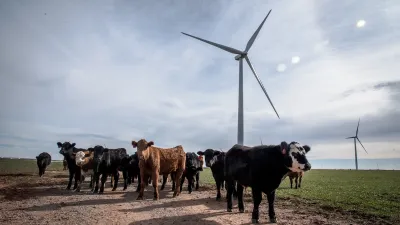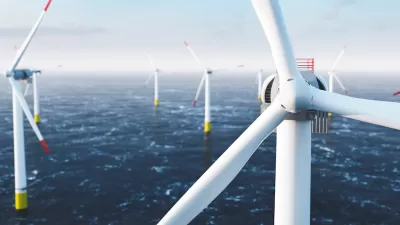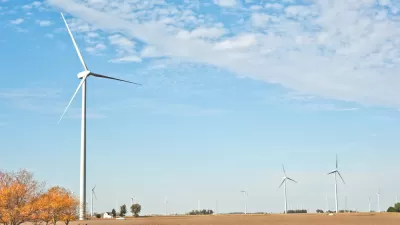A new study shows that wind farms have a small but temporary negative impact on nearby property prices.

A new study will undoubtedly fuel the debate over how wind energy projects impact surrounding communities, writes Dan Gearino in Inside Clean Energy. The study reveals that “properties within a mile of a proposed wind farm experience an average decrease in value of 11 percent following the announcement of the project, compared to properties located three to five miles away.” However, the effect is only temporary, and “the difference fades away a few years after the project is operational to the point that properties within a mile of a project have values that are indistinguishable from those three to five miles from a project.”
Researcher Ben Hoen says the paper doesn’t account for the potential benefits of wind farms, which could bring new revenue and jobs to local communities and reduce local taxes. “The paper also finds that the negative effects on property values were apparent for wind farms near metro areas, while the effects were not apparent outside of metro areas.”
FULL STORY: Do Wind Farms Really Affect Property Values? A New Study Provides the Most Substantial Answer to Date.

Planetizen Federal Action Tracker
A weekly monitor of how Trump’s orders and actions are impacting planners and planning in America.

Maui's Vacation Rental Debate Turns Ugly
Verbal attacks, misinformation campaigns and fistfights plague a high-stakes debate to convert thousands of vacation rentals into long-term housing.

San Francisco Suspends Traffic Calming Amidst Record Deaths
Citing “a challenging fiscal landscape,” the city will cease the program on the heels of 42 traffic deaths, including 24 pedestrians.

Amtrak Rolls Out New Orleans to Alabama “Mardi Gras” Train
The new service will operate morning and evening departures between Mobile and New Orleans.

The Subversive Car-Free Guide to Trump's Great American Road Trip
Car-free ways to access Chicagoland’s best tourist attractions.

San Antonio and Austin are Fusing Into one Massive Megaregion
The region spanning the two central Texas cities is growing fast, posing challenges for local infrastructure and water supplies.
Urban Design for Planners 1: Software Tools
This six-course series explores essential urban design concepts using open source software and equips planners with the tools they need to participate fully in the urban design process.
Planning for Universal Design
Learn the tools for implementing Universal Design in planning regulations.
Heyer Gruel & Associates PA
JM Goldson LLC
Custer County Colorado
City of Camden Redevelopment Agency
City of Astoria
Transportation Research & Education Center (TREC) at Portland State University
Jefferson Parish Government
Camden Redevelopment Agency
City of Claremont





























